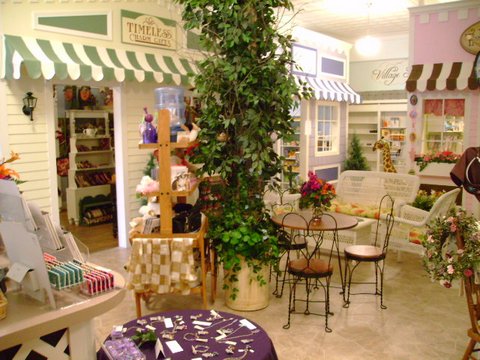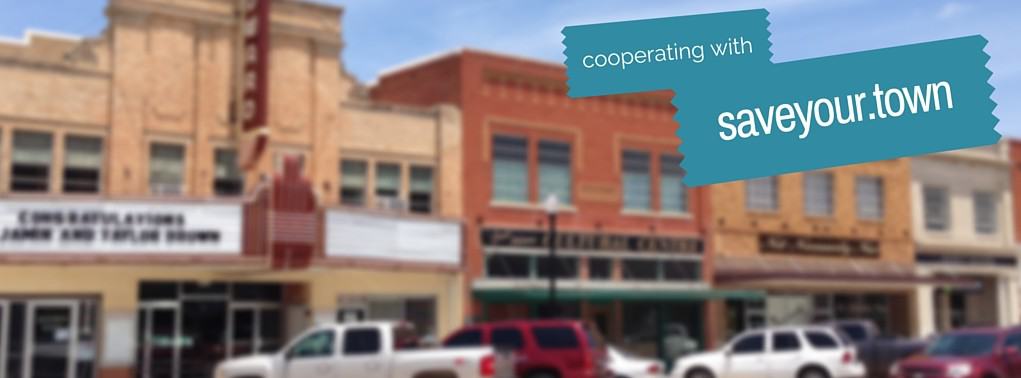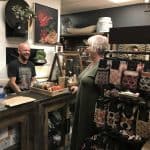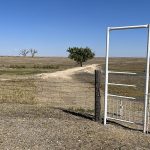
A formerly-empty department store downton converted into space for many tiny business in Washington, Iowa. Photo by Cathy Lloyd.
Small towns struggle to fill big downtown buildings. Back in the day, they may have been department stores or large retailers. Now they most likely sit empty. Instead of waiting for one big tenant to fill them, what if we divided them up, and turned them over to a whole bunch of tiny businesses to grow in?
By giving Tiny spaces where businesses can be Together, we’re tapping two of the Innovative Rural Business Models. And we can even encourage Temporary experiments and trial businesses, another of the models.
The Village, Washington, Iowa
The small town of Washington, IA, pop 7200, had an old department store building. It was so big, 15,000 square feet, the owners struggled to find any tenant that could fill the whole thing. So it sat empty for years.
Until Cathy Lloyd had the idea of turning it into The Village. Now it’s a collection of little shops. There are stores with only a few hundred square feet each. In the courtyard “town square” in the middle, there are tables and push carts available for micro-micro businesses to grow in. And that’s what happens. Many businesses grow from a tiny table to a little shop to a full-scale business. Others reach a size that is comfortable for the business owner and stay there. And that’s a win, too.
“I truly believe that this is the future of retail in small communities,” Cathy Lloyd said in this guest post for us.
Coppes Commons, Napanee, Indiana
Coppes Commons, in Napanee, Indiana, pop 6,600, is in a former manufacturing space, where they made Hoosier cabinets, like my grandma had in her kitchen. The 100,000 square foot factory is being renovated, step by step, and now houses an always-changing variety of small businesses offering locally made, handcrafted and freshly baked items.
1440 Main Street, Ferdinand, Indiana
Shared spaces can also include a community of diverse businesses like 1440 Main Street, that we first talked about in 2010. It’s become the hub of activity for downtown Ferdinand, Indiana, pop 2100. It’s an entrepreneurial community where the businesses benefit from being together, and the arts are blossoming.
Roscommon County, Michigan
When my colleague from SaveYour.Town Deb Brown visited Roscommon County, Michigan, her downtown tour included a large building used for boat storage in winter. Thanks to her suggestion, they got started immediately on setting it up for shared spaces for crafters in summer. They’re planning to put some shared workspace in the middle, almost like a co-working space for local crafters.
Small City examples
Similar projects are happening in bigger cities, too. While they’re not small town examples, they’re still interesting to learn from.
Grand Rapids, Michigan, pop 194,000, has the Shops @ MoDiv. A developer, frustrated by empty retail space they couldn’t rent, decided to try an experiment. They cut the big space into 10 small and easy to reconfigure spaces.
It was designed as “an innovative and flexible retail incubator.” It houses both start-ups and established retailers downtown. The smallest are the size of a closet and the biggest, a bedroom. Even the entryway is being shared by three local artists.
“You couldn’t get me out with a crowbar,” artist Rose Ellis said in a news story. “It’s the best business plan I never thought of. It has turned my life around.”
Your examples?
New to SmallBizSurvival.com? Take the Guided Tour. Like what you see? Get our updates.











Karen shared this example by email:
Donalsonville, GA, located in Southwest GA near the AL/FL lines, has embarked on a revitalization plan that started with a “Shared Space” model. The Downtown Development Authority applied for and was awarded a $100,000 USDA Rural Business Development Grant to open and operate a “Mini-Mall”. The Front Porch Market now has approximately 15 vendors that sells everything from boutique clothing, antiques, jewelry, handmade goat soap and lotion, garden accessories, to name a few. The DDA was able to operate for 1 year with the grant ($75,000), hold some classes for vendors and the public; and provide a small revolving loan fund of $25,000.
Thanks for your information. Love reading what other towns are doing.
Karen
Bruce Mines, Ontario, population 500, has a great example called Mariner’s Cove. The building is broken up into many separate spaces called “coves,” each with a different business. There are retail shops with antiques and collectibles, massage, color and aroma therapy, manicures, and much more. The businesses use a private Facebook group to keep in touch with each other. Owners Larry and Pat Peterson were even kind enough to give a bit of credit to me for confirming their idea would work when I mentioned shared retail in one of our SaveYour.Town webinars! Read more about their shared space in the Sault Star.